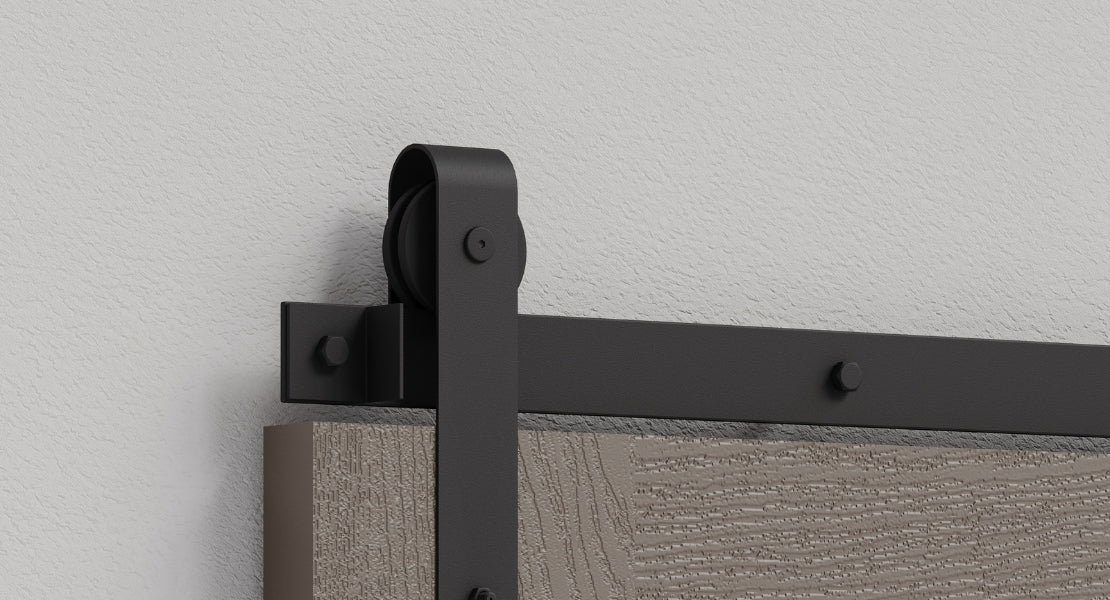
Barn Door Trim or No Trim?
Barn doors are a stylish and useful addition to homes that can use them. It’s no surprise they have become more popular in recent years.
If you are renovating your home or a room, consider using a barn door. It is a stylish and functional way to enhance your space!
However, for many, there is a major question that comes with the addition of barn doors. To trim or not to trim?
If you’re looking to bring barn doors into your home, you too will be faced with this question.
In this article, we will explain what it means to trim your barn doors. We will discuss why you might want to do it and why you might not. We will also look at the pros and cons of trimming your doors for long-term use.
Let’s get started!
Benefits of Barn Door Trim
If you are looking for barn door trim ideas you may well want to know what the benefits are.
Trim can be applied to the barn door itself, or around the doorjamb, or indeed on both.
That means there are a lot of options to suit your needs!
The first and most noticeable benefit of barn door trim is its aesthetic quality.
Trim can be a stylish addition to a barn door. It helps frame the door and the doorway. Trim also gives you a chance to add different colors or materials to your interior.
But did you know that Barn door trim can also be a functional addition?
One main way trim helps a barn door is by strengthening the edges of the door frame. This is where damage often happens.
If you are replacing a door in your home with a barn door, there may already be trim. This means you can keep the trim and use the doorway as it is.
Make sure to hang the rollers the right distance from the wall and doorjamb. This way, your barn door will roll smoothly over the trim.
Trim over barn doors and doorjambs can also be excellent in ensuring a close fit between the door and the wall.
There are various brackets and hangers for different doors. Some stylish options may stick out from the wall more than you want.
Trim on the doorjamb allows the door to still fit close to the doorway.
There are several different ways trim might be added to a barn door, and each of them has its own functional and aesthetic appeal.
You might try any one of the following, whichever best suits your needs.
- Flat Trim: Flat trim is a straight piece of wood or metal. It is added around the edges of the door to create clean and solid lines. Flat trim gives extra protection to the edges of a barn door. Most of the damage usually happens at the edges and corners.
- Z-Brace Trim: Z-Brace trim looks like the diagonal bracing found on traditional barn doors and includes the titular z patterns across the door’s face.
- X-Brace Trim: X-brace trim follows the same premise as Z-brace trim, but uses an X shape rather than a Z. It’s all in the name, really!
- Picture Frame Trim: Picture frame trim hangs on the face of the door around all four sides of the door. This trim is mostly decorative and is named as it is due to the fact it acts like a picture frame over the door.
Trim style can be a largely aesthetic affair, and thankfully there are no right or wrong answers!
Trim can be done in metal or wood depending on your needs or tastes, so it’s really up to you what style you might choose.
Skip the Trim
Trim isn’t always necessary!
If your door fits well in the doorway and slides easily, you don’t need it at all.
There are a few other reasons some folks prefer to go trimless with their barn doors.
Chiefly, if you simply do not like the look of a barn door with trim, you can choose to leave it off.
There are no clear benefits or drawbacks to this choice. Many people find the clean look of a barn door without trim appealing.
Barn doors without trim also have a modern look about them that pairs well with a number of interior design trends.
A painted barn door can add charm to any home. It can match the room or be a bright feature.
A barn door is a classic design. However, you can modernize it with unique trim and paint choices. This can help bring it into the present day.
Trim can also pose something of an issue for cleaning and maintenance.
While this is not a deal breaker for trim, skipping it can make cleaning and caring for your door easier.
Trim has many corners and joins where dirt and dust can collect. Dust in the bottom corners of your door trim can look bad and be a hassle to clean.
Trim may also have different maintenance needs from the rest of the door.
For example, metal may need to be polished or cleaned differently than the wood of the door. Some types of wood may also need to be refinished from time to time.
If the entire door needs refinishing and repainting, the trim often has to be removed. This gives better access and means the trim adds extra work.
Factors to Decide whether to Trim or not to Trim
The most important consideration in deciding whether or not to add trim to your barn doors is personal preference.
If your door is installed and used correctly, and it is painted the way you like, then it serves its purpose. The trim is simply a matter of personal preference.
Beyond your tastes, there are some things to keep in mind that will help you make a decision.
You may want to consider the space you are hanging a barn door.
Does trim suit the space? If you are using a specific design style that fits trim well, leaving it out will make the door look bad.
If instead, you are working with a more sleek and modern space, trim may be a strange departure of form and is best left off.
Keep the interior design of the space in mind when making decisions on trim.
The size of the door can also play a part in deciding whether or not to add trim.
For single entryway doors, the door's face is small. It usually does not need trim to break up its surface.
For larger doors, a plain face may make it appear to be simply a wall, or create a rather imposing look. Trim can help break up the plainness of such doors and give the door more visual interest.
Trimming around the edges of the door won’t change how it looks much. So, when thinking about edge trim, your choice depends on whether you like the style and if you need extra protection.
Adding trim can also balloon the cost of your door. You can install your own trim. However, if you want a special type, like iron or heavily bolted trim, costs can go up. Labor and materials will add to the total price
If you have set aside the money for trim and the trim you specifically want, then this is no issue.
If you plan to renovate or install a barn door to save money, you can skip the trim. Doing it yourself can also help you save a lot.
These are only a few of the considerations you will take into account when deciding whether or not to add trim to your door.
Trim might not even be this big a consideration and you’ll find a door that has or doesn’t have trim that you will love. In that case, congratulations!
If you are ordering a barn door or searching for a specific one, think about how these features affect your choice.
Conclusion
While far from essential, barn door trim can be a handsome addition to your barn doors that bring with them a few positive benefits!
This article gives you the details you need. You can decide if door trim is right for you. It will also help you see if it fits your interior design style.
Need the hardware and accessories for your barn door? Shop now!


